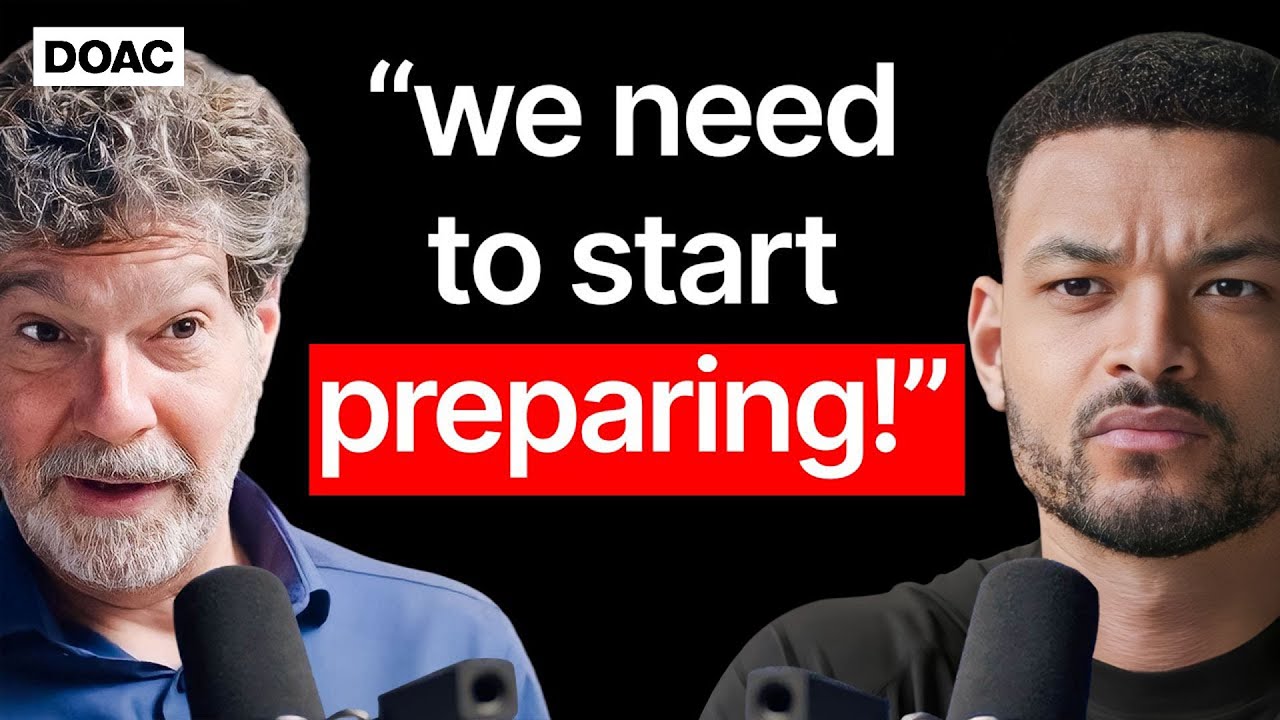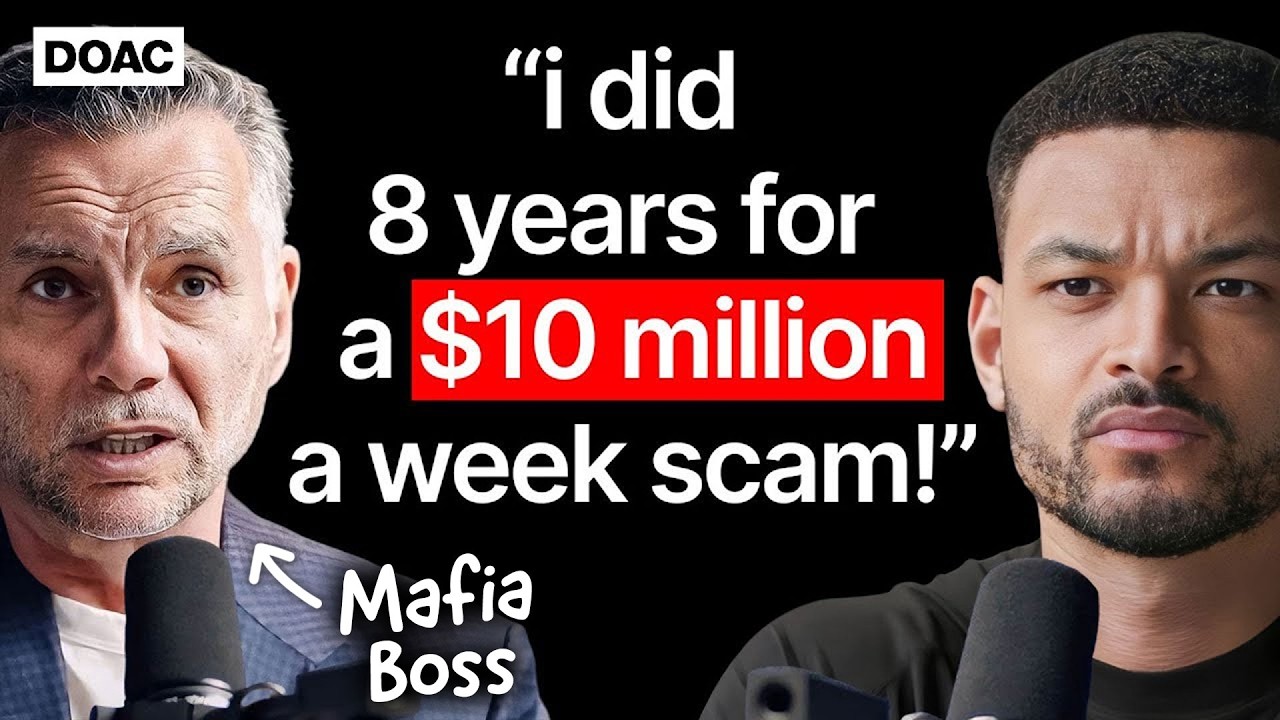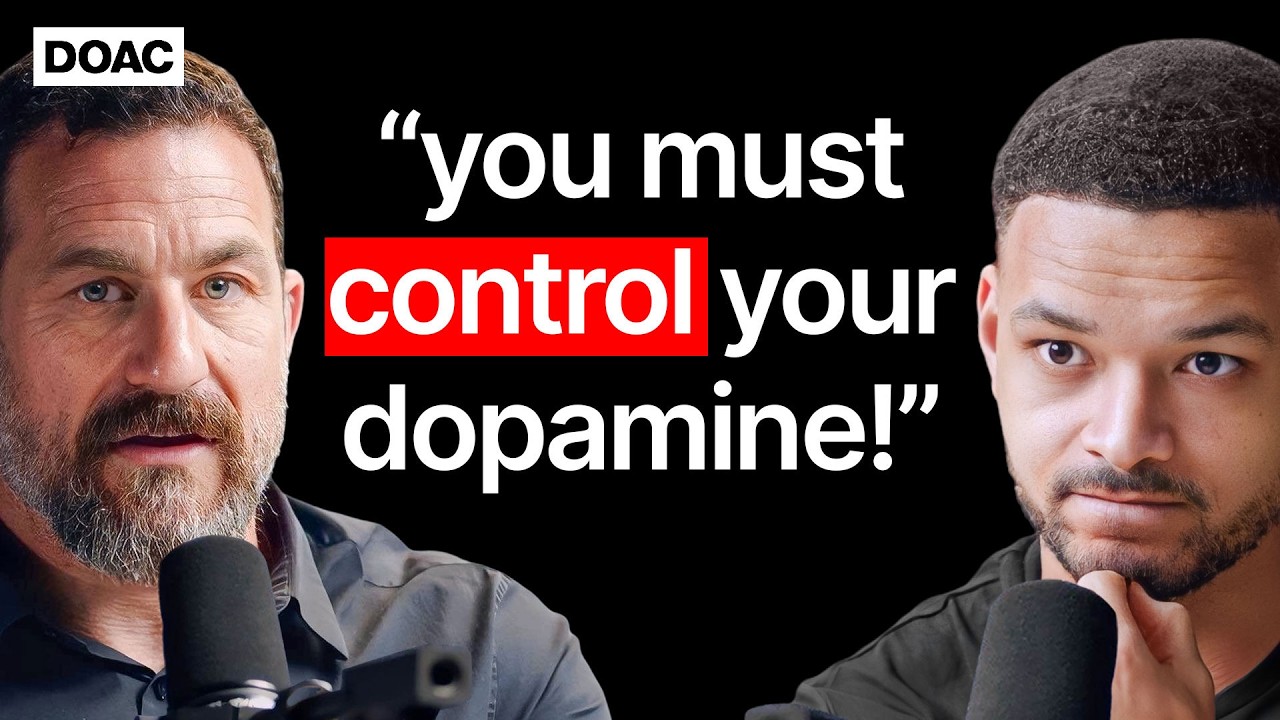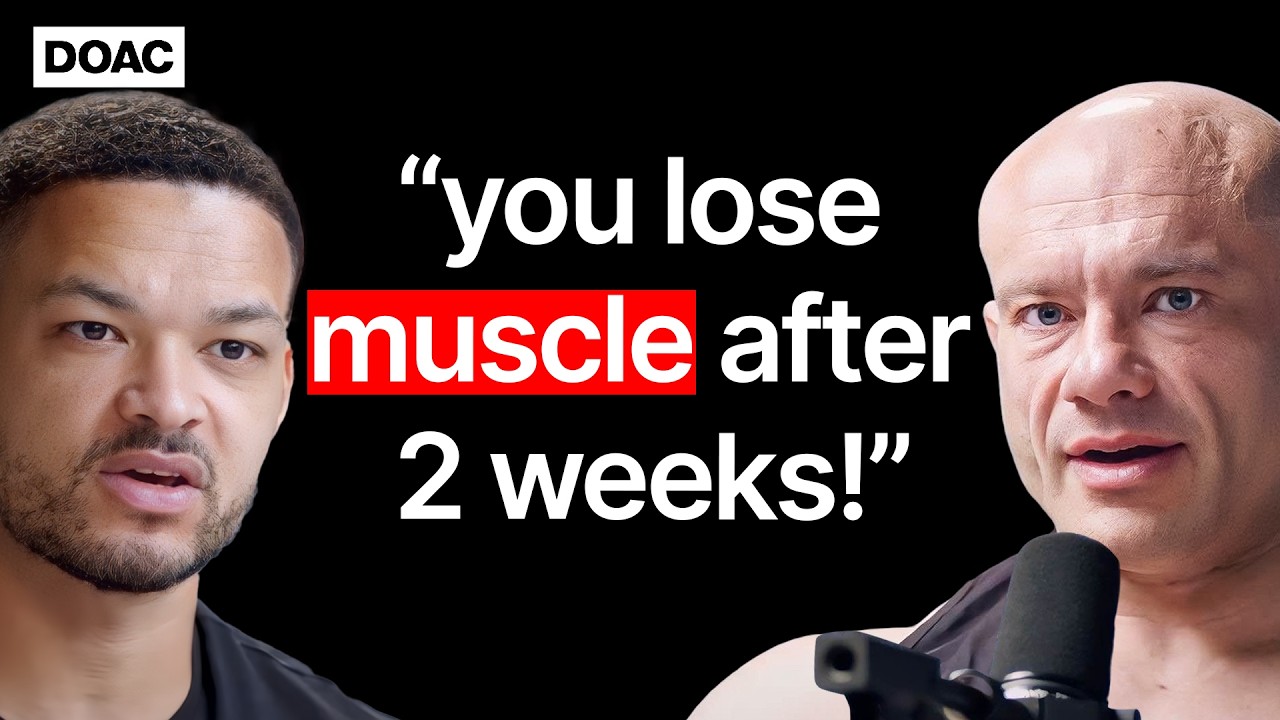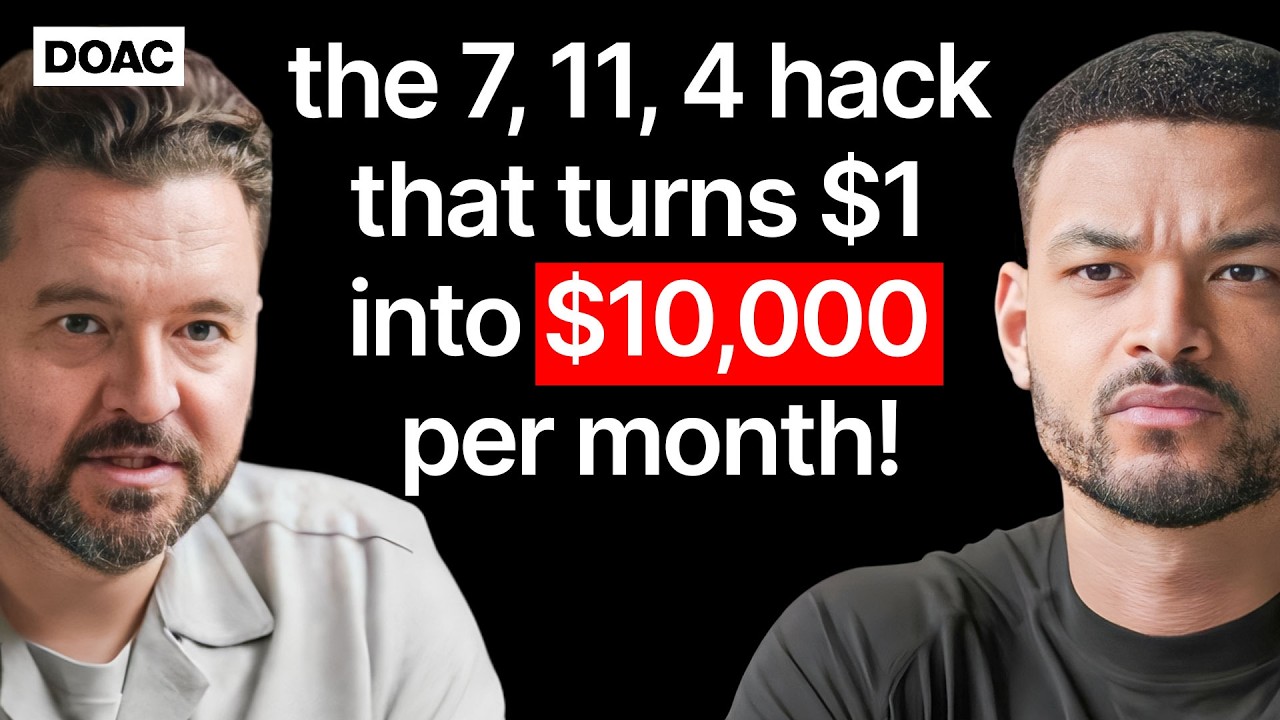
Several years ago, I sat at a sticky Formica table in a coffee shop, scrolling through job listings and feeling like an invisible ghost in the crowd—one more resume lost in a digital sea. If you’ve ever felt the sting of irrelevance (or just plain confusion about how to ‘win’ today), you’re not alone. The world as we know it has changed; the old rules for success don’t work anymore. Instead, we’re all grappling with being remembered in an age of distractions, and wondering how to carve out a spot that actually matters. What if the secret isn’t working harder, but seeing the system for what it is—and learning to hack it? Let’s get personal, practical, and a little unconventional as we dig into what ACTUALLY gets someone noticed and thriving in the chaos of 2024.
1. The Brain’s Shortlist: Why Most People Are Forgettable (And How to Hack That)
Have you ever wondered why, despite your best efforts, you sometimes feel invisible in a crowded digital world? Or why your carefully crafted emails and introductions seem to vanish into thin air? If so, you’re not alone. Research shows that people feel increasingly irrelevant due to information overload and digital distractions. But there’s a science-backed reason behind this—and a way to hack it for a more memorable personal brand.
The Reality: Limited Mental Slots for Memory
Let’s start with a blunt truth:
‘You need to know that people have a small number of slots in their brain for who they remember.’ (0:00-0:05)
Humans only have a handful of “mental slots” reserved for remembering people. Think of it as a VIP list in your mind. Most of us can only keep a few names and faces top-of-mind at any given time. This isn’t a flaw—it’s just how our brains are wired. In a world where digital distractions are everywhere, breaking into someone’s shortlist is a real challenge.
The 7-1-1-4 Principle: What Is It and Why Does It Matter?
You might have heard of the 7-1-1-4 memory principle (0:09-0:12), but let’s break it down without jargon. This principle suggests that our brains organize people into a kind of mental hierarchy:
- 7 people you think about daily
- 1 person who’s your closest confidant
- 1 person who’s your main rival or competitor
- 4 people who are in your wider circle
That’s it. Everyone else? They’re background noise. This is why, even if you meet dozens of people at a networking event or connect with hundreds online, only a select few make it into your “mental slots memory.” The rest fade away, lost to the digital ether.
Why the Brain Deletes Most Messages
Here’s where things get even trickier. According to Daniel Priestley, a leading expert on personal branding and visibility (0:22-0:26), your brain is “extremely good at deleting messages” (0:13-0:15). Every day, you’re bombarded with emails, notifications, ads, and faces. Your brain has to delete most of it just to function.
But not everything gets deleted. Some messages stick. Why? Because they fit into one of five special categories—think of them as “sticky notes” your brain refuses to throw away.
The Five Types of Messages the Brain Doesn’t Delete
So, what actually survives our mental eraser? Research indicates that only five types of messages make the cut. Here’s a mind map to illustrate these categories, with a special highlight on the last two—they’re pure gold for anyone wanting to build a memorable personal brand:
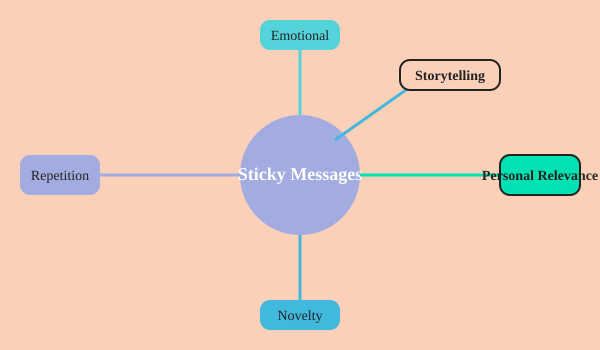
The last two—Personal Relevance and Storytelling—are especially powerful. If you want to be remembered, connect your message to someone’s personal experience or tell a compelling story. That’s how you break through the noise.
Why Feeling Invisible Is So Common (And What You Can Do)
It’s no wonder so many people feel invisible in today’s world. With so much content competing for attention, it’s easy to feel like your voice gets lost. Studies indicate that digital distractions have made it even harder to stand out, both online and offline.
But here’s the good news: by understanding how the brain’s “mental slots memory” works, you can tailor your approach. Focus on crafting messages that fit into those five sticky categories—especially the last two. That’s how you start to build a memorable personal brand, even in a sea of digital distractions.
A Tangent: Why We Remember Song Lyrics but Not Emails
Ever noticed how you can recall song lyrics from years ago, but forget an email from last week? That’s because music taps into emotion, repetition, and storytelling—all three are “sticky” message types. Most emails, on the other hand, are generic and lack personal relevance. If you want your messages to stick, take a cue from your favorite songs.
Personal Story: The Time I Forgot My Boss’s Name
Let me confess: once, after a week at a new job, I blanked on my boss’s name during a meeting. Mortifying, right? But it wasn’t because I didn’t care—it’s just that my brain hadn’t filed him into one of those precious mental slots yet. It was a wake-up call: if you want to be remembered, you have to give people a reason to put you on their shortlist.
So, next time you’re crafting a message or introducing yourself, remember: the brain is wired to forget. But with the right approach, you can hack the system—and finally stand out.
2. Outdated Playbooks: From Industrial Age Myths to Digital Age Realities
If you ever feel like you’re working hard but not getting anywhere, you’re not alone. The problem isn’t you—it’s the playbook you’ve been handed. As research shows, most people are still being prepared for jobs that no longer exist, and the gap between what we’re taught and what’s actually needed in today’s world is only growing (0.34-0.47).
“We’re playing by an old set of rules and going through a schooling system that is preparing us for a world that no longer exists.”
Why School Preps You for a World That’s Gone Extinct
Think back to your school days. You were probably told to get good grades, pick a practical career, and find a stable job. That advice made sense—if you were living in the Industrial Age. Back then, the formula was simple: learn a skill, get a job, work for an employer, and climb the ladder (0.39-0.44). This was the era of the assembly line, where predictability and routine were valued above all.
But here’s the catch: the world has moved on. The Industrial Age is over, replaced by the Digital Age—a reality where the old rules barely apply. Yet, most schools and career advisors still operate as if nothing has changed. The result? A generation (or two) feeling lost, invisible, and “wiped out” before they even get started (0.54-0.57). And it’s not just young people. Even seasoned professionals are realizing that the skills and security they once relied on have become obsolete.
Industrial Age vs. Digital Age: How Success Rules Have Changed
Let’s break down the shift. In the Industrial Age, success was about fitting into a system. You learned a trade, got a job, and hoped for a pension at the end (3.00-3.31). The rules were clear, and the path was linear:
- Acquire skills
- Get a job
- Work for an employer
But the Digital Age flipped the script. Now, it’s about standing out, not fitting in. Success is built on your unique intellectual property, your personal brand, and your ability to create scalable businesses or side hustles (1.01-1.25). The new path looks more like this:
- Develop unique ideas or expertise
- Build a personal brand
- Leverage digital platforms for business or entrepreneurship
This isn’t just about becoming an influencer with millions of followers. It’s about being seen as a “key person of influence” in your field—enough to open doors and create real opportunities (1.09-1.13).
The Invisible Competition: AI and the Myth of Safe Jobs
Here’s where things get even trickier. The rise of AI means that even jobs once considered “safe” are now at risk (0.50-0.52). Studies indicate that AI is erasing the certainty that used to come with traditional careers, forcing everyone to rethink what skills and frameworks are truly future-proof.
You’re not just competing with other people anymore—you’re competing with algorithms. That’s why obsolete career advice like “just get a degree and you’ll be fine” is more dangerous than ever. The real competition is invisible, and it’s relentless.
Chart: Shifting Career Models—From Employment to Entrepreneurship
To visualize just how much things have changed, take a look at the chart below. It compares job security, perceived opportunity, and the relevance of formal education across the Industrial Age, Digital Age, and the emerging AI era.

As you can see, job security has plummeted from the Industrial Age to the AI era, while perceived opportunity has shifted and the relevance of traditional education is increasingly questioned. The takeaway? The old employment model is fading, and entrepreneurship or personal brand-building is quickly becoming the new normal.
Generational Impact: Why Feeling “Wiped Out” Isn’t Just for 20-Somethings
It’s easy to assume that only new grads feel lost in this new landscape. But the reality is, even experienced professionals are struggling to adapt. Many find themselves invisible in a digital-first world, unsure how to translate decades of experience into something relevant today (0.54-0.57). The sense of being “wiped out” is universal, not generational.
Quick Tangent: My Brief, Disastrous Attempt at a Factory Job
Let me share a quick story. Years ago, I tried working a factory assembly line. The work was repetitive, the environment noisy, and I felt like a cog in a much bigger machine. I lasted less than a week. It was awkward, exhausting, and—if I’m honest—soul-crushing. Looking back, it’s a perfect metaphor for why the Industrial Age model no longer fits. Today, you need to be more than just a set of hands; you need to bring your unique ideas and adaptability to the table.
The world has changed. The playbook must change with it. If you’re still following Industrial Age advice in the Digital Age, you’re not just behind—you’re invisible.
3. Apprentice Yourself: The Entrepreneurial ‘Understudy’ Approach
If you’re eager to crack the modern success code, here’s a truth you can’t ignore: jumping straight into launching your own business is rarely the best move. Instead, consider the path of an entrepreneur apprenticeship—a hands-on, immersive way to learn the new rules of entrepreneurship directly from those who are already succeeding (5.47–5.58).
Why You Shouldn’t Start a Business Cold—Learn as a ‘Number Two’
It’s tempting to believe that the fastest way to entrepreneurial success is to dive in headfirst. But research shows that direct entrepreneurial exposure—working closely with founders—accelerates real-world competence far more effectively than learning in isolation. In fact, Daniel Priestley, a successful founder and author, recommends that if you’re just starting out (especially in your early 20s), you should avoid solo-founding until you’ve completed an apprenticeship (5.52–5.56).
Why? Because the leap from employee or student to founder is massive. The skills, mindset, and network you need are best developed in the trenches, not in theory. Priestley himself started as a ‘number two,’ working under a mentor and learning the ropes before launching his own ventures (6.40–6.44).
Entrepreneur Apprenticeship: How and Why It Works
An entrepreneur apprenticeship is more than just a job. It’s a deliberate, focused period where you work in a small team—ideally fewer than 12 people—directly alongside a founder. This setup gives you a front-row seat to the realities of building a business in today’s fast-paced, digital-first world (5.58–6.04).
You’re not just observing; you’re participating. You see how decisions are made, how setbacks are handled, and how growth is managed. This in-context, modern learning is invaluable, especially compared to traditional education or large corporate environments where you’re often far removed from the action.
Who Should You Apprentice With?
Not all founders are created equal when it comes to startup mentorship. The ideal mentor for your entrepreneur apprenticeship is someone with a visible, but not celebrity-level, personal brand—think 5,000 to 50,000 followers on social media. Their business model should be elegant, inspiring, and scalable (6.08–6.18).
Why this range? Founders with this level of influence are accessible, yet established enough to offer real learning opportunities. Their businesses are often at a stage where you can see both the challenges and the wins up close. As Priestley puts it:
“You need to learn how that person is building their personal brand and how are they building their business so that it can scale.”
You don’t need to apprentice in the exact field you want to enter. What matters is learning the new rules—how to build a brand, communicate globally, and sell to anyone, anywhere (6.18–6.34).
Daniel Priestley’s Journey: From Apprentice to Founder
Priestley’s own story is a testament to the power of this approach. He spent two years as a ‘number two’ under a mentor, helping scale a business from zero to $6 million in revenue and from zero to 60 staff—all within a single year (6.44–6.51). This intense, hands-on experience gave him the skills, confidence, and network to launch his own successful ventures.
His journey highlights what research and experience both confirm: the fastest, most effective way to learn entrepreneurship is to work directly with founders in a high-growth, small-team environment.
The Small Team Advantage: Real Skills, Fast Feedback
Why is a small team so important? When you’re one of fewer than a dozen people, you’re exposed to every aspect of the business. You get rapid feedback, take on real responsibility, and see the impact of your work immediately. This is startup mentorship at its best—intense, challenging, and incredibly rewarding.
Contrast this with large organizations, where roles are siloed and learning is slow. In a small team, you’re forced to adapt, problem-solve, and grow—often within 90-day rapid learning cycles, which research indicates are the most effective for skill development.
Table: Steps & Qualities of Effective Entrepreneur Apprenticeships
| Step/Quality | Details |
|---|---|
| Ideal Team Size | <12 people |
| Recommended Mentor | Entrepreneur with 5,000–50,000 followers and a scalable, elegant business model |
| Learning Environment | Direct, daily contact with founder; exposure to all business functions |
| Growth Example | Daniel Priestley: 0–$6M revenue, 0–60 staff in 1 year as an apprentice |
| Key Outcomes | Real-world skills, rapid feedback, deep understanding of scaling and branding |
If you want to master the new rules of entrepreneurship, don’t start alone. Find a founder, join a small team, and apprentice yourself to the process. The lessons you’ll learn are impossible to replicate anywhere else.
4. The Power (and Pitfalls) of the Personal Brand
When you think of personal branding for entrepreneurs, it’s easy to picture influencers with millions of followers, perfectly curated feeds, and viral videos. But the truth is, the real power of a personal brand doesn’t always come from sheer numbers. In fact, research shows that a small, highly engaged audience can be far more valuable than a massive, unfocused one. The rise of the key person of influence—someone who shapes conversations in their niche—proves that you don’t need to be famous to have impact. You just need to be known by the right people.
Personal Branding Isn’t Just for Influencers
Let’s get this out of the way: you don’t need a million followers to make your mark. Influence isn’t reserved for celebrities or social media stars. If you’re an entrepreneur, consultant, or creator, your personal brand is your calling card. It’s what sets you apart in a crowded market. Daniel Priestley’s frameworks, like the 5Ps and the entrepreneurial pyramid, highlight how becoming a key person of influence in your field can unlock opportunities, attract capital, and bring customers to your door.
Quality Over Quantity: The 5,000 vs. 5 Million Rule
Here’s something most people overlook: 5,000 loyal followers can outperform 5 million passive ones. If you’re hitting the right audience—people who care about your message, who trust your expertise—you’re already ahead. Studies indicate that niche authority is often more powerful than broad popularity. When your content resonates with a specific group, you become their go-to resource. That’s the true value of an authentic online presence.
Building a Brand from Daily Habits: The Twitter/Instagram Story
Let’s look at a real-world example. At age 24, Daniel (and the podcast host) made a commitment: write a tweet every single day (10.44-10.48). Not just tweet, but screenshot it and post it on Instagram as well (10.51-10.53). This wasn’t about chasing trends or viral moments. It was about building a daily habit. The results? Over time, this simple practice snowballed into something massive. “Downstream consequence number one: got to a million followers on Instagram by posting these quotes of ideas that I had every day” (11.03-11.07).
But the numbers only tell part of the story. The real transformation happened behind the scenes. Every evening at 7 p.m., Daniel would step away to think deeply about what to share. This ritual wasn’t just about content—it was about sharpening his thinking and voice.
Hidden Benefit: Writing Daily Sharpens Your Messaging and Thinking
There’s a hidden benefit to daily content creation that most people miss. It’s not just about building an audience; it’s about building yourself. As Daniel put it,
“It taught me how to communicate ideas in a concise, high impact way and kind of what people respond to.”
(11.14-11.20)
When you write every day, you’re forced to clarify your thoughts. You learn what resonates and what falls flat. Over time, your messaging becomes sharper, your ideas more impactful. Research shows that this process of daily creation doesn’t just attract followers—it creates unique value and opens doors you never expected. That’s the real magic of an authentic online presence.
The Danger Zone: Chasing Followers Without a Clear Message
Of course, there’s a flip side. The trap of chasing followers for the sake of numbers is real. It’s easy to lose your voice in the noise, to start posting what you think people want rather than what you truly believe. Without a clear message, your brand becomes diluted. The audience you attract might not be the one you want—or need.
This is where many entrepreneurs stumble. They see viral success as the goal, forgetting that influence is about trust and authority, not just reach. A focused, consistent message will always outperform scattershot content, no matter how many likes or shares you rack up.
Tangent: That One Week I Went Viral for the Wrong Reason
Let’s be honest—sometimes, things go sideways. Maybe you post something that blows up for all the wrong reasons. Suddenly, your notifications are flooded, your follower count spikes, but the attention feels… off. It’s a strange feeling, realizing that viral moments can bring the wrong crowd, or even damage your reputation if your message isn’t clear.
This is why building a personal brand is about more than just visibility. It’s about authenticity, consistency, and knowing who you’re speaking to. The downstream consequences of building an authentic voice are profound. You attract the right opportunities, the right partners, and the right customers. And yes, sometimes you’ll make mistakes—but those are part of the journey.
Unlocking Opportunity Through Authenticity
A strong personal brand can unlock capital, customers, and collaborations. But it starts with daily action—writing, sharing, refining. Over time, these habits snowball into something much bigger: self-understanding, authority, and the ability to shape your industry. The old rules of success—waiting for permission, relying on credentials—don’t work anymore. In today’s world, your personal brand is your passport.
5. Side Hustle Science: Why Short-Term Experiments Trump Grand Plans
When you think about entrepreneurship, it’s easy to imagine years of planning, endless meetings, and the pressure of building something that has to last forever. But here’s a secret: the most effective way to crack the modern success code isn’t about grand, lifelong ventures. It’s about quick, low-risk experiments—what you might call side hustle ideas that run on a 90-day business model. This approach is all about learning fast, making smart moves, and never getting stuck in something that drains your energy or resources (9.10-9.12).
Open-and-Shut: The 90-Day Experiment Approach
Let’s get straight to the point.
‘A side hustle is an open and shut business case so within 90 days you’re going to start something and finish something.’
(9.12-9.16)
That’s the beauty of the 90-day experiment. You start with an idea, give it your all, and—crucially—you know there’s a finish line. There’s no risk of getting trapped in a never-ending project. You launch, learn, and move on. This is entrepreneurial experimentation at its most practical.
Real-World Lessons: Nightclub Parties and Valentine’s Day Roses
To see this in action, let’s look at two real-world examples from the transcript:
- Nightclub Parties: As a teenager, the speaker organized nightclub events. The process was simple: agree on a date with the club, promote the event, run the party, split the money, and then—done. The entire cycle, from idea to revenue, happened in under 90 days (9.27-9.41).
- Valentine’s Day Rose Sales: Another quick hustle involved buying hundreds of roses, dressing up in tuxedos, and selling them door-to-door for Valentine’s Day. The whole project—from idea to execution—lasted about three weeks. Once Valentine’s Day was over, so was the business (9.51-10.09).
These side hustles weren’t meant to last. And that’s the point. They were open and shut—perfect for learning without long-term risk.
Quick Wins, Clear Finishes, and Healthy Detachment
Why does this approach work so well? For one, you get quick wins. There’s a clear finish line, which means you can detach emotionally and financially once it’s over. You don’t have to worry about a failed business haunting you for years. Instead, you reflect, learn, and decide what’s next. Research shows that experimenting with side hustles accelerates learning, and the quick completion gives you more opportunities for reflection and iteration.
Healthy disengagement is key. It prevents burnout and keeps you from sinking more time or money into something that isn’t working. You’re not married to the idea—you’re just dating it for a season.
Rapid Feedback: When to Double Down or Walk Away
Another advantage of the 90-day business model is rapid feedback. You see what works and what doesn’t, fast. If you hit on something promising, you can double down. If not, you walk away—no guilt, no sunk costs. This agility is what separates successful entrepreneurs from those who get stuck in endless planning or failing ventures.
Table: Real-World Side Hustle Cycles
| Side Hustle Example | Duration | Notes |
|---|---|---|
| Nightclub Parties | < 90 days | Idea to revenue cycle completed in under 3 months |
| Door-to-Door Rose Sales | ~3 weeks | From concept to finish, all before and during Valentine’s Day |
| Typical Side Hustle | 90 days | Standard cycle for open-and-shut entrepreneurial experiments |
Tangent: The Failed T-Shirt Brand (And Why That’s a Good Thing)
Here’s a quick tangent. Maybe you’ve tried something that didn’t work out—like a T-shirt brand that fizzled after one season. That’s not a failure; it’s a blessing in disguise. Because you kept it short, you didn’t waste years chasing a dead end. You learned, you moved on, and you’re better for it.
Why Side Hustles Are the Ultimate Low-Risk Laboratories
Think of side hustles as your personal laboratory for entrepreneurial experimentation. You get to test ideas, build confidence, and develop market sense—all without risking your life savings or sanity. The limited time frame means you can reflect, iterate, and try again, smarter each time.
Studies indicate that this approach—quick starts and quick exits—enables smart, agile moves. You’re not betting everything on one big idea. Instead, you’re building a portfolio of experiences, each one teaching you something new.
So, if you’re searching for side hustle ideas or wondering how to start experimenting with 90-day business models, remember: it’s not about building an empire overnight. It’s about learning fast, moving smart, and never being afraid to shut the door and start again.
6. The Invisible Generation: Reclaiming Meaning and Opportunity
Have you ever felt like you’re invisible? Maybe you’re stuck in a job that doesn’t excite you, or you’re struggling to find your next step. Maybe you feel wiped out before you’ve even really started. If so, you’re not alone. This isn’t just a personal struggle—it’s a global phenomenon. In fact, as discussed between 4:55 and 5:39 in the source material, people everywhere are feeling invisible, disconnected, and uncertain about their future. This sense of detachment isn’t limited to young people in their twenties. It’s affecting established professionals, entrepreneurs, and even those in their forties, fifties, and beyond.
The term invisible generation captures this widespread feeling. It’s not about age—it’s about a shared experience of being overlooked, undervalued, or left behind by rapid economic and technological change. The world has shifted dramatically, and the rules that once promised stability—like getting a degree, landing a “safe job,” and climbing a predictable career ladder—no longer guarantee security or meaning. As the transcript notes,
“There are no safe jobs anymore—AI is disrupting everything.”
(5:04-5:07)
This disruption isn’t just about technology replacing jobs. It’s about the loss of certainty and the growing sense that traditional paths are broken. Many people, regardless of their experience or achievements, are finding themselves knocked off course. Even seasoned professionals and business owners are questioning their relevance and struggling to adapt. The pain of feeling stuck, invisible, or unable to connect with the right people is real—and it’s everywhere (5:19-5:36).
But here’s the important thing: feeling wiped out by these changes is a natural reaction to systemic upheaval, not a sign of personal failure. Research shows that when the world shifts beneath our feet, it’s normal to feel lost or uncertain. The key is recognizing that you’re not alone—and that there are ways to reclaim agency and meaning.
Why Even the Experienced Get Knocked Off Course
It’s tempting to think that only young people, just starting out, feel this way. But as the transcript points out, this sense of invisibility and detachment affects people at every stage of life. Established professionals who once felt secure in their roles are now facing the same uncertainty as recent graduates. The pace of change—driven by technology, globalization, and shifting economic realities—means that no one is immune.
What’s happening? Many of us are still playing by an old set of rules. The education system, for example, was designed for a different era. It taught us to follow a linear path: study hard, get a degree, find a stable job, and work your way up. But those rules don’t work anymore (5:41-5:46). The landscape has changed, and clinging to outdated strategies only leads to frustration and disappointment.
Actions That Restore Meaning: Reskill, Reposition, Reconnect
So, what actually works today? The answer lies in action, not introspection. Instead of waiting for opportunities to appear, you need to create them. That means reskilling—learning new, relevant skills that match the demands of the modern world. It means repositioning yourself, being open to new roles, industries, or ways of working. And most importantly, it means reconnecting with purpose—finding work and communities that align with your values and ambitions.
Studies indicate that community and active reskilling are powerful antidotes to feeling irrelevant. Entrepreneurial communities, mentorship networks, and project-driven learning environments provide both belonging and motivation. When you surround yourself with people who are also navigating change, you gain perspective, encouragement, and practical advice. Modern mentorship isn’t about a single wise guru—it’s about learning from peers, collaborating on real projects, and supporting each other’s growth.
Yesterday’s Safe Jobs vs. Today’s Uncertain Landscape
It’s worth drawing a clear contrast: yesterday’s “safe jobs” are largely a thing of the past. The promise of lifetime employment, predictable promotions, and a clear retirement path has faded. Today, uncertainty is the norm. But that doesn’t mean you’re powerless. In fact, those who adapt—by embracing lifelong learning, building strong networks, and staying flexible—are thriving in ways that weren’t possible before.
A Wild Card: Rethinking Education and Work
Imagine if “school” wasn’t years of passive learning, but just three months of real work projects. What if you could build skills, confidence, and connections by actually doing the work, rather than just studying theory? This shift—from passive learning to project-driven action—is already happening in some of the most innovative communities. It’s a model that empowers you to find purpose through action, not just reflection.
Conclusion: Reclaiming Agency in a Changing World
The invisible generation isn’t doomed to stay invisible. By acknowledging the reality of systemic change—and letting go of outdated rules—you can reclaim meaning and opportunity. The path forward is active, community-based, and driven by real-world experience. Whether you’re just starting out or reinventing yourself mid-career, the key is to take action, seek out modern mentorship, and build connections that matter. In a world where “there are no safe jobs anymore,” your greatest asset is your ability to adapt, learn, and support others on the same journey.
TL;DR: You don’t need to follow outdated advice to succeed in today’s world. Instead, learn to stand out using new rules—like building your personal brand, seeking entrepreneurial apprenticeships, and experimenting with side hustles. The secret? It’s not about being everywhere, but about being memorable and adaptable.
A big shoutout to The Diary Of A CEO for the valuable insights! Be sure to check it out here: https://youtu.be/sFkR34AMPw8?si=4LCuGFpQwHfVr-B7.

